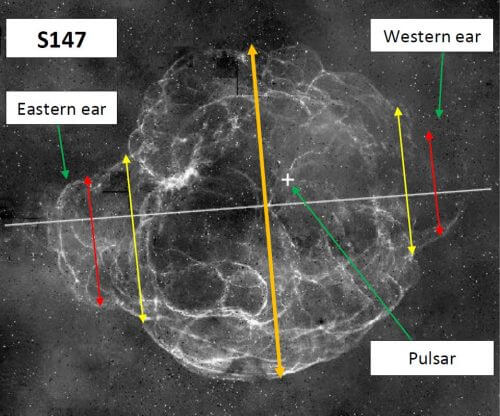Aldana Grichiner, an undergraduate student at the Technion, is currently publishing the first scientific paper that proposes a new model for the formation of "Mickey Mouse ears", which characterize many supernova remnants.

Grichiner, 21 years old, was born in Argentina and immigrated to Israel with her family when she was a baby. Later, she was accepted into an instructor's class (mathematics, physics and community culture) at Mikif 15 in Ashdod, and already at the age of XNUMX she decided that she would study at the Technion, "because scientific research attracted me and I knew that the Technion was the best place to do it." Three days after her release from the IDF, she began studying at the Technion, and during her first semester, she participated in Prof. Noam Soker's physics course. "I liked his attitude as a lecturer and as a person - he does everything for the students and is always ready to talk with them even outside the official admission hours. I read his articles and realized that it would be interesting to work with him, so I approached him and asked him to guide me in the first degree project." The appeal to Prof. Soker was answered positively and gave birth to an article that will be published soon. The subject: a new model for the formation of "Mickey Mouse ears" that characterize many supernova remnants.
A supernova is a phenomenon typical of heavy stars at the end of their lives. This process begins with the collapse of the star into itself, an event in which the radius of the inner part, known as the core, is a thousand times smaller. In this process, in which the inner part of the star shrinks to a diameter of about 20 km, a neutron star is created with an enormous density: a billion tons per cubic meter. The contraction, which is the result of the force of gravity, is stopped at a certain point and is replaced by a huge explosion that blows the mantle of the star - its outer parts that were left out during the contraction process - at a speed of millions of km/h.

"When you study the morphology of supernova remains," explains Prof. Soker, "you find that a third of them have two 'ears' protruding from the main body. The accepted explanation for the explosion of supernovae does not successfully explain the phenomenon of ears, and in the present article we propose an alternative model that agrees with simulations, observations and various calculations."
According to the model of Grichiner and Prof. Soker, the ears are formed due to the emission of jets launched during the explosion of the star or shortly after it. These gas jets are ejected from the rapid core rotation, preceding the collapse, and carry with them enormous kinetic energy. "These jets meet explosive gas on their way, and this encounter 'inflates' the ears we see. Therefore, we claim that it is appropriate to make a paradigmatic change in the explanation of the explosion of heavy stars, the so-called 'core collapse supernova'."

5 תגובות
The professor from Princeton supports the thesis presented in the article. Noam Soker and Aldana are the signatories of the scientific article.
The website new scientist where the popular news was published is respected.
At first I thought it was ridiculous - the article is here. But he also appears in the reference below, and has more than one father Adam Burrows of Princeton:
https://www.newscientist.com/article/2111375-mickey-mouse-ears-may-explain-universes-biggest-explosions/
Noam Soker and Aldana Grichiner also published a first article on the ARXIV website:
https://arxiv.org/abs/1610.09647
where articles are submitted for review by peers before publication in a scientific journal, and also as a way to establish copyright on the article.
As far as I know, from Prof. Hagai Netzer's lecture at the Astronomical Society conference from about 20 years ago (!!) the missing term in the article is: "adsorption disk".
A concept known for many years from the field of supernova stars and black holes.
The accretion disk is a stream of material orbiting the collapsing star. The source of the material in the accretion disk is a neighboring star, usually a red giant, which is "sucked in" by the collapsing star's gravity.
The surface area of the collapsing star (the event horizon) is too small to absorb all the collapsing material, therefore the collapsing material is thrown due to the centrifugal force, towards the poles of the collapsing star's rotation axis.
The gas jets thrown into space from the poles create the "Mickey Mouse ears" which are perpendicular to the plane of the adsorption disk.
This process is unique to La type supernovae, which absorb a neighboring star and therefore have an accretion disk.
Apparently the research reported in the article includes a more detailed calculation of the process.
Wasn't there already an article exactly like this?
The explanation about the "ears" really does not satisfy the mind, why are they formed on the sides? After all, according to the descriptions of the phenomenon - the attack is supposed to happen everywhere and not just on both sides of the star